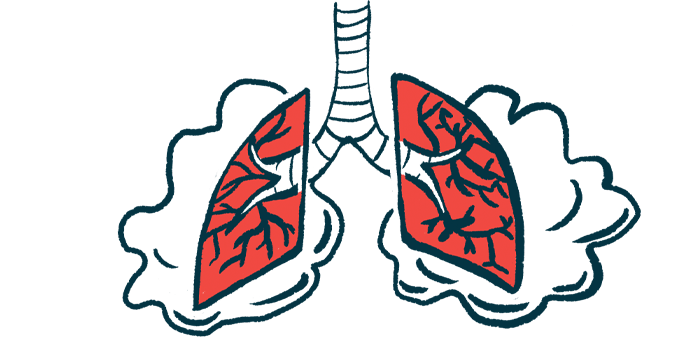Anti-inflammatory drugs treat lung issues in baby with Gaucher disease
Researchers say case shows limits of ERT in 'pulmonary manifestations'

Treatment with corticosteroids and hydroxychloroquine to dampen inflammation helped ease serious lung problems in an infant with type 3 Gaucher disease, a case report shows.
The child developed breathing difficulties and low blood oxygen despite being diagnosed early and starting enzyme replacement therapy (ERT). Because doctors suspected inflammation caused by the buildup of Gaucher cells in the lungs was driving the symptoms, they added anti-inflammatory medicines, which led to its improvement.
“This case underscores the limitations of ERT in addressing pulmonary manifestations of [Gaucher disease] and highlights the need for personalized treatment strategies,” the researchers wrote. The study, “Case Report: Novel treatment approach for severe interstitial lung disease in type 3 Gaucher disease,” was published in Frontiers in Pediatrics.
In Gaucher disease, a deficiency in the glucocerebrosidase (GCase) enzyme, which is needed to break down a fatty molecule called glucocerebroside (Gb1), causes it to build up to toxic levels. Gb1 accumulates mainly inside immune cells called macrophages, which engulf foreign pathogens and handle large amounts of cellular waste. When macrophages cannot dispose of Gb1 effectively, they acquire a swollen, crumpled appearance and become known as Gaucher cells, the main drivers of inflammation and symptoms in the disease.
Gaucher cells can infiltrate various organs and tissues. While the spleen, liver, and bones are most affected, they can make their way to other organs, including the lungs, which is associated with a poor prognosis. That’s because approved therapies such as ERT aren’t always able to reach impacted areas in the lungs.
“Although controlling respiratory symptoms is important, it is extremely challenging to achieve with currently available therapies,” the researchers wrote.
Treating respiratory problems in Gaucher
People with Gaucher-related lung problems may therefore need a different approach. Better understanding what causes respiratory symptoms in these cases could help identify medications that may make a difference, said the researchers, who write about a child diagnosed with Gaucher through newborn screening, and where genetic analysis suggested he had mutations associated with neuropathic forms of Gaucher.
At birth, the boy showed no signs or symptoms of the disease. His first symptoms were noticed at 3 months and included markers of Gb1 accumulation, mild enlargement of the spleen, and slight weakness in the neck and trunk muscles. The clinical team initiated ERT, based on these signs and genetic results that suggested he had a severe form of the disease. After a month of treatment, his Gb1 markers reduced and he showed normal development, without neurological symptoms.
Respiratory symptoms began to appear during the second month of ERT, however. These included shortness of breath, fast breathing, and low blood oxygen levels, particularly when lying down.
After lung infections or heart issues were excluded, imaging scans revealed abnormalities that suggested interstitial lung disease (ILD), or inflammation and scarring of lung tissue. Despite an increase in his ERT dose, the boy’s lung issues didn’t respond adequately to treatment.
Because signs of body-wide inflammation and cellular stress were seen, the doctors said lung damage could have been caused, or boosted, by the accumulation of Gaucher cells in the lungs. They started the boy on methylprednisolone, a corticosteroid, at 8 months. He initially responded well, seeing decreases in inflammatory markers and reduced ILD severity. However, his symptoms began to return when the dose was tapered, which is standard to avoid side effects associated with discontinuing corticosteroids.
At the end of his corticosteroid therapy, the boy’s ILD severity and inflammatory markers were similar to those before treatment.
Standard European protocols suggest using hydroxychloroquine, an immunomodulatory agent that reduces an immune response, to treat ILD in infants. The child’s clinicians started this treatment when the boy was 11 months, and two months later, he improved clinically, with much milder signs of ILD.
This surprised the doctors because hydroxychloroquine can decrease function of lysosomes, that is, the compartments where Gb1 accumulates inside cells. Regardless, the boy responded favorably, with few side effects.
“The positive response to anti-inflammatory and immunomodulatory therapies suggests a potential role for these approaches in managing GD-related lung disease,” they wrote.




